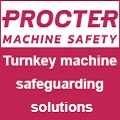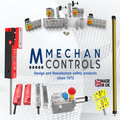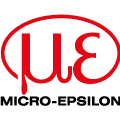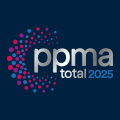
Posted to News on 23rd Aug 2016, 16:21
10 top tips for specifying test equipment
The PEAK Group designs and builds electronic test rigs for a wide range of products - from domestic appliances to aero engine controllers. Some of the company's products are truly innovative and offer new levels of effectiveness, rapidity and thoroughness. Karl Miles, technical sales manager at PEAK Production Equipment Ltd, offers 10 top tips for specifying test equipment, whether for use as a standalone test system or for incorporation as a test station within an automated manufacturing system.

Whether due to regulatory requirements, customer specifications or simply a desire to deliver only the highest quality products, manufacturing companies are increasingly performing tests on subassemblies and finished goods. Sometimes in-process tests are carried out as an integral part of the production but, at other times, or in addition, post-production tests are required using standalone equipment. Either way, it is important that the test equipment is correctly specified, which is not always straightforward for companies that are more used to manufacturing, rather than testing.
Tip 1
Discuss the test specification with the test equipment supplier at the earliest stage possible, as they might have ideas you have not thought about, and will almost certainly have the experience to see a solution to a problem - or even to spot a problem you have not considered.
But also get feedback from your engineers and operators at an early stage, because they use the existing system day after day. The happier they are using the new system, the more productive they will be and more welcoming of it. Ask them open questions such as:
- "What do you not like and what would you change about the current test system?"
- "What would you like to see in the new test system?"
- "Do you prefer to sit or stand or would you like support for both?"
- "Do you prefer a touch screen or keyboard and mouse?"
Tip 2
Think whether to test board-level components or use system interfaces - such as USB ports, RJ45 ports or touchscreen - to perform functional tests. Sometimes the biggest point of failure is the interface, so it is important that it should be included within the testing process; and while traditional probe access testing is still used, the trend is away from this towards only accessing the product via its normal user interfaces or with a mix of some probing and user interfaces.
Tip 3
Try to avoid thinking about the test process in isolation. Consider where in the production process is the best point to test. This means understanding how the subassemblies come together, and which are likely to produce QA pass rates. If the subassemblies are all likely to have good pass rates it may be better to test final assemblies. On the other hand, if expensive finished pieces are likely to be frequently rejected because of faulty subassemblies, then it is important to test earlier in the assembly process.
You should also think about testing in relation to other processes outside of assembly, such as storage and packing. Once tested, is the product then packed or does it have another stage of production? It is all about efficient flow and avoiding repeated handling.
Future-proofing is always a delicate balancing act, especially for generic systems or where process and workflows may change. You need to avoid the test system becoming quickly out of date, but too much focus on future-proofing will make the initial investment expensive. The test system supplier should be able to help you to devise a modular system that can be added to as required.
Tip 4
Be efficient in your use of labour. If you have a long test, what is the operator going to do for the five minutes it is running? Again, think about other upstream and downstream processes and how they relate to the testing process: volumes and test time will influence your choice of using manual, robotic or fully automatic loading of units under test.
Tip 5

Tip 6
Think about how you can simplify the test rigs. This might make them cheaper to build, but it also might make them cheaper to run and more consistent in their operation. For example, do you need to provide multiple power supplies? If so, instead of calibrating multiple supplies separately, calibrate one meter and use that to check the supplies.
Tip 7
Testing in extreme environmental conditions is always difficult. One of the biggest problems with environmental chambers is actually managing the connections to the test. A close-fitting 'hood' may be more efficient than a conventional environmental test chamber, and can be quicker and much cheaper to operate, as well as easier to manufacture. There are generic hoods on the market but they do not always provide a perfect seal, whereas a custom-made hood can be a perfect fit. Sealing is an important consideration because, without this, you get frosting and hence water when cold testing - rarely a good thing to mix with electronics for either the UUT (unit under test) or the tester.
Tip 8
Selecting the right probes for your electrical tests is vital, but you also need to ensure you pay attention to the design of the holder. It must not only present the probe correctly, but also hold it safely and reliably, and allow for easy changing if the probe becomes damaged or worn. Ensure you have planned a supply of probes for the expected life of the test rig.
Tip 9
Think carefully about interference, both from within the test system and from external sources.
Look carefully at the RF signal quality of interconnections, cabling and termination to ensure that signal quality is not degraded through attenuation or reflections.
With optical testing, whether simple ON/OFF measurements of LEDs or more complex machine vision, take care to ensure that external factors do not influence tests.
When testing very low power analogue (uA) values take care to ensure that noise is not introduced and the measurement is a true representation of the signal. Minimise attenuation and calibrate the system to allow for this.
Electromagnetic compatibility (EMC) precautions and emissions are critical in many applications. Remember to consider RF radiation and use correct EMC gaskets at the test system and adaptor levels.
Finally, carefully consider power isolation, filtering and conditioning, transient protection and phase protection on three-phase systems during the design and build of mains distribution units, as these protect your sensitive instrumentation which typically represents 60-70 per cent of the total system cost.
Tip 10
Finally, the safety of your testers and those around them is paramount.
Think about all aspects such as panel/door interlocks with integrated emergency stops, both local and remote. Safe movement and motion control of equipment are also important, as some test rigs are very heavy.
A more obvious safety concern is high voltage or current. Ensure you are protected to at least SIL level 2 and up to highest level 4. Very high power (three-phase 415VAC/125A to DC 28V/1000A) requires understanding of not just isolation but also protection against long discharge times.
Follow the link to find out more about test systems from PEAK Group.
Want the latest machine building news straight to your inbox? Become a MachineBuilding member for free today >>

















